Is Laika a husky or not? Features of breeds and their differences
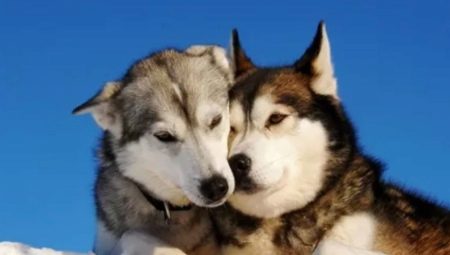
Russian northern peoples have long harnessed hardy huskies and went hunting with clever huskies. With the development of civilization, the need to get food for oneself disappeared by itself. Now you can ride a dog sled in any park. Well, representatives of both breeds have gained special popularity among the townspeople spoiled by the amenities. Many admire these fluffy beauties, admiring their power, strength and endurance.
However, few people know about the peculiarities of caring for them. And distinguishing a husky from a husky is also difficult. To avoid confusion, it is worth considering the basic characteristics of both breeds.
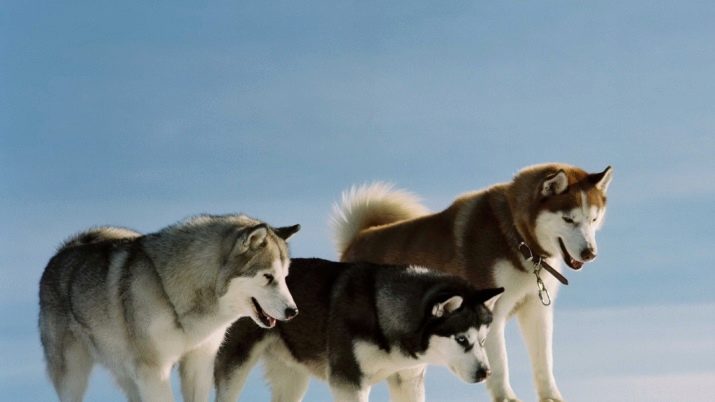
Husky traits
Siberian huskies - these are short-haired dogs with a thick undercoat... The most common color options are black and white and gray and white. Less common are brown-white, brown, black and white colors. These dogs shed only twice a year, and their fur is odorless. The main distinguishing feature is a black or white "mask" on the face.In shape, the "mask" can resemble glasses, clover, star or heart. The option of two white vertical stripes at the base of the nose is allowed.
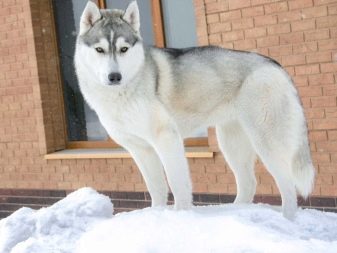
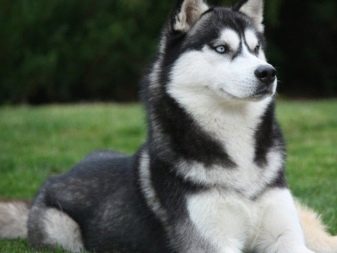
The shape of the husky's head is in many ways reminiscent of a wolf: the same well-defined head, the same high-set medium-sized ears. But if the wolf's eyes are cast with dangerous green, then the Husky's calling card is the expressive gaze of almond-shaped bright blue eyes. In addition to the blue-eyed representatives of this breed, you can find huskies with black, brown and gray eyes. There are dogs with olive and amber eyes. Even multi-colored eyes are not uncommon for a husky.
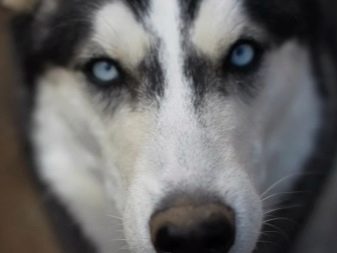
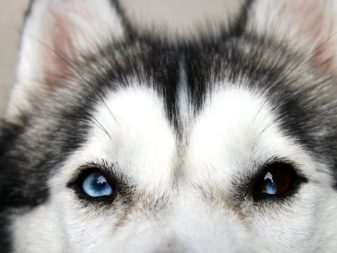
Another wolfish trait is the inability to bark... In response to any external stimulus, the husky bursts into an animal howl. These dogs are distinguished by a strong massive constitution. They have powerful legs with wide, sturdy pads designed for long runs in the snow. The straight fluffy tail bends beautifully, like a fox. An adult husky male weighs 21-28 kg with a height at the withers of 54-60 cm. Bitches are slightly smaller - only 16-23 kg with 50-56 cm at the withers. At the same time, girls are in no way inferior to boys in strength and endurance.

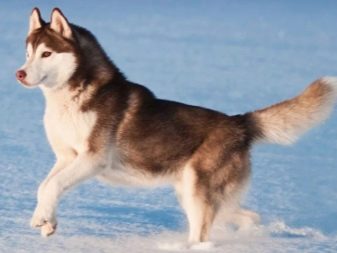
By the nature of the husky - active, cheerful dogs that like to move a lot. They are sincerely attached to their owners and simply adore small children. For kids, huskies become good nannies, and for older children, they become fun playmates. These good-natured animals will willingly communicate with guests, will gladly accept new family members. Moreover, it can be either a newborn child or a four-legged friend of a person. No Husky watchman - they are very happy with new acquaintances.

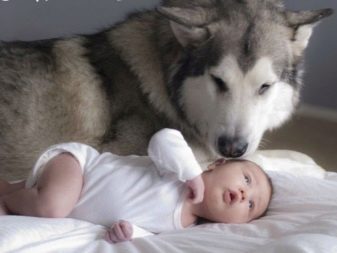
These dogs have a well-developed hunting instinct, but they are characterized by some willfulness. If such a dog catches someone, it will never bring the game to the owner and he will have to get to it on his own. In all other respects, these are creatures loyal to their person.
Like description
This breed unites 6 types of dogs: Russian, East and West Siberian, Yakut, Russian-European, gray and black Norwegian. Each species has certain characteristics, but there are a number of features by which it is easy to recognize a husky. For example, it is a petite physique and a tail coiled into a ring. Laikas have long, smooth coat with a thick undercoat.
There are coarse hairs on the head, ears and paws. There is a fluffy collar on the neck. The smell of "doggy" comes from the wool. The dog sheds only once a year, but if the conditions of detention are not respected, it may molt more often.


Laikas have a strong build and well-developed muscles. Males are slightly larger than females - their height can reach 70 cm at the withers. But often this figure does not exceed 63-65 cm with a weight of 23 kg. Both sexes are slim and graceful. They have nothing in common with their wild relatives, so their appearance is not much different from typical representatives of the canine family.
There is a wedge-shaped oval of the head, ears with pointed ends, round eyes of light or dark shade. Laikas are characterized by brown, gray and green eyes. Only Yakut Laechs can be blue-eyed. The breed standards allow any color: black, black and white, brown, brown and white.
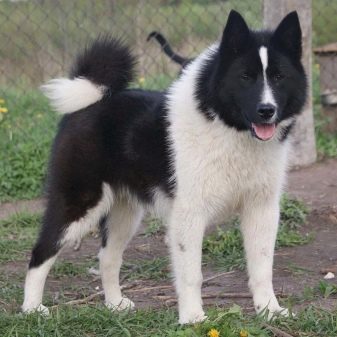
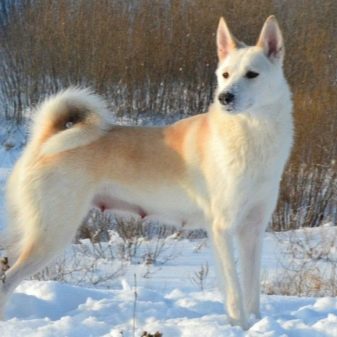
They express their displeasure with loud barking. They don't just vote, but they will always warn the owner about the approach or departure of a stranger. And when hunting, the barking of these dogs helps to understand whether the game is near or far. Likes are born hunters and good guards... They will get along well with all household members and will find a common language even with small children. They do not like strangers, therefore even a harmless arrival of guests will be perceived by them as an encroachment on the territory.
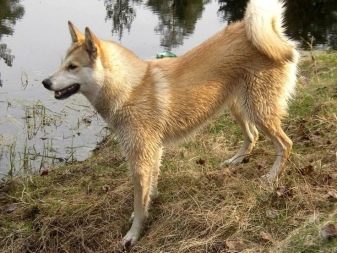
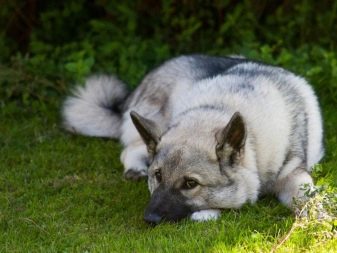
What is the difference?
The listed characteristics apply to adults. But what about small puppies? Looking at a fluffy mischievous lump that looks at you with tender eyes, it's hard to tell the difference.
If the purchase is planned in an appropriate nursery that specializes in husky or husky breeding, the need for comparison will disappear by itself. But if you intend to buy a puppy from your hands, you will have to rely on your own observation to bring a dog of the desired breed into the house. In this case, you should pay attention to the puppy's appearance, character and behavior.


External data
The main differences in appearance between husky and husky puppies should be listed point by point. For example, even two-month-old huskies are characterized by:
- light "mask" and dark "glasses" on the face - due to this, the kids have a very stern look;
- striped, black or pink nose;
- expressive almond-shaped eyes;
- fluffy straight tail, hanging down and not rising above the back line;
- thick paws with large pads;
- strong physique;
- thick ears, the tips of which are directed upward;
- scissor bite and even teeth;
- liveliness, energy and sincere interest in the world around them.
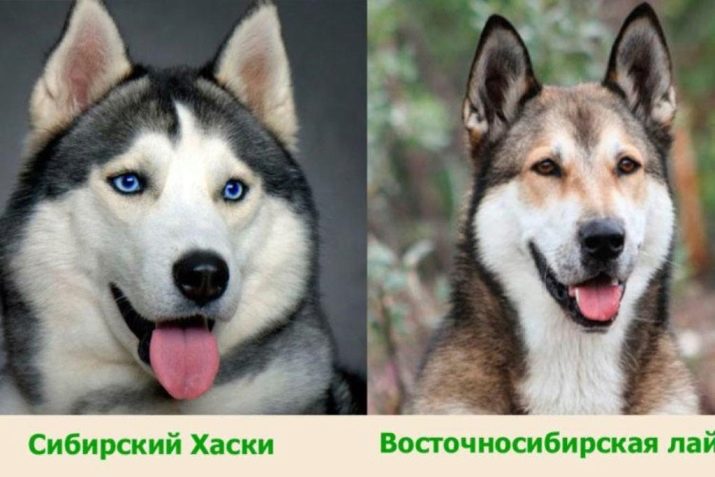
According to these criteria, it is easy to distinguish a little husky from a husky, which has the following features:
- 6 incisors on the upper and lower jaw, while the bite is considered normal when the upper jaw slightly extends beyond the lower;
- dark brown eyes;
- the nose is black, but in puppies with a white coat it may be brown;
- ears are erect, small, shaped like a triangle;
- the tail is folded into a ring;
- the coat is thick, standing;
- the puppy is actively exploring the territory and barks.
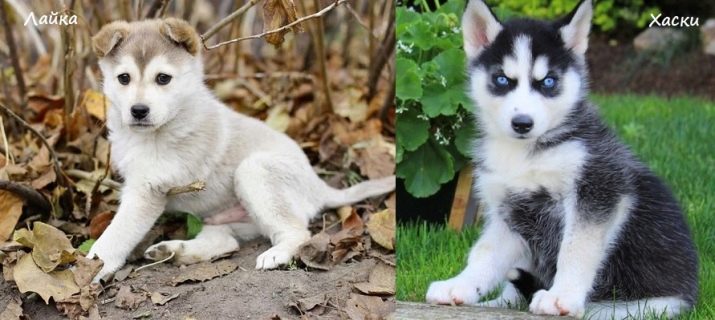
The color of small huskies and huskies can be any - as they get older, the puppy's coat changes color. It is important that the selected puppy looks healthy and showed activity characteristic of his age. This is found out by the simplest examination. The nose should be moist, the eyes clear and shiny, the ears warm and pink on the inside. The dog should not have bad breath or bleeding gums. The coat of healthy babies is thick and shiny.

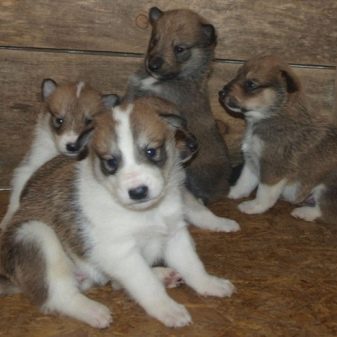
Before buying, you should ask the breeder in detail about the diseases of the parents, since the possibility of a hereditary predisposition is not excluded. This information will allow you to adjust the care of your pet and prevent the appearance of diseases.
Character and behavior
Huskies and huskies differ not only in appearance. They have a lot of differences in character and behavior. Dog handlers and experienced breeders recommend that you familiarize yourself with the genetic map of the puppy's parents, and then choose a friend for yourself. This is really necessary: you must admit that aggressive parents are more likely to have an evil puppy than phlegmatic individuals. But, each breed has certain character traits.
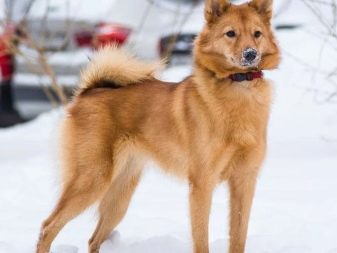
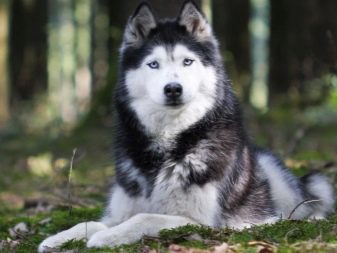
Husky
Husky dogs radiate goodwill from puppyhood. They are not grumpy, non-aggressive, it is natural for them to show a keen interest in the world around them. These dogs are very smart and quick-witted, they have developed intuition and natural flair. They are clean and therefore do not require special care. Huskies give in easily training. But at first the puppy does not show any trust to the owner: his friendship has to be earned.
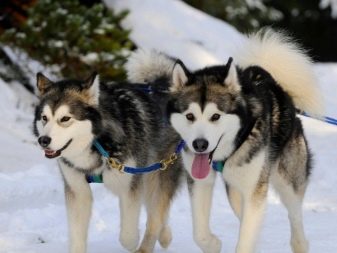
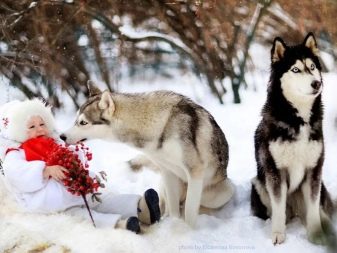
In terms of education, one should adhere to carrot and stick method. Too gentle treatment will make even the kindest dog uncontrollable, and too strict will embitter. Siberians are wayward. Finding an independent solution for them is the norm.
Huskies perceive their owner as a good friend and do not believe that they cannot live without this person. At the same time, they are bored, left alone, expressing their melancholy with an animal howl. However, some individuals find another way of expressing feelings, nibbling on the upholstery of furniture, linoleum and baseboards.

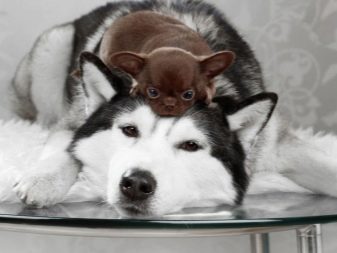
Husky are extremely freedom-loving, therefore, they cannot be started as a cute indoor dog: with their irrepressible energy, these dogs will turn the whole house over. You can't ban them either at the summer cottage: they will dig a tunnel, jump over the fence and go in search of adventure. There have been cases when domestic huskies hunted for neighboring animals. They especially liked cats, chickens and rabbits.
It is very easy to channel the dog's energy into a peaceful channel. It is enough to provide the dog with physical activity and spend more time playing, training and walking.
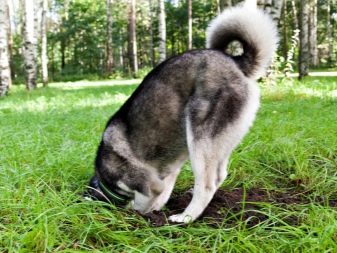

Likes
If hardy huskies are started as a companion dog, then the Siberian husky is chosen more for guard or hunting purposes. First, hunters are identified with the sex of the dog. Males are powerful, more aggressive, they can be trained for large prey like wild boar, bear or elk. They are also suitable for the protection of private territories. But, boys are wayward, love to show character, and the owner will often have to put them in their place.
Bitches are more agreeable and hardy, are easy to train, they can be trained for small game, and then re-profiled for large game. Their main disadvantage is the periodic bearing of puppies and caring for them.
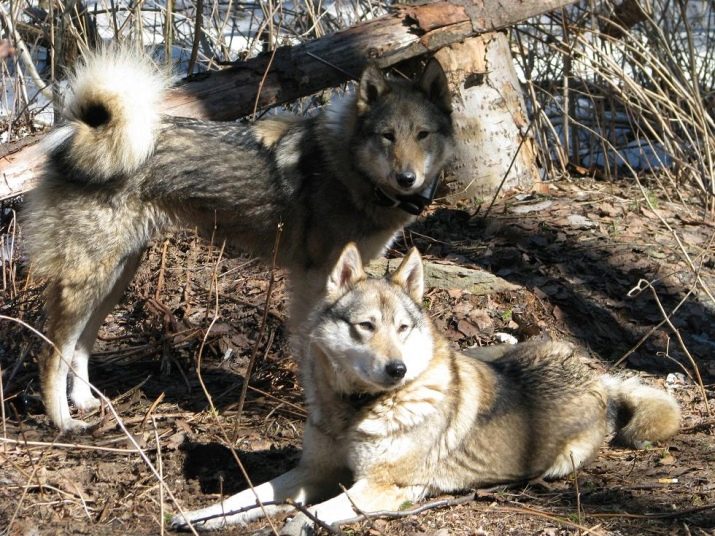
Already in puppyhood likes should be calm and independent. They do not show aggression, but they can stand up for themselves if they feel threatened. It is easy to be convinced of their courage and concentration - they do not lose contact when looking directly into the eyes. These dogs are sincerely attached to the owner and all family members, and they are hard to bear separation and loneliness.
They are very freedom-loving and inquisitive, so you cannot put them on a chain. Like huskies, they require long walks and outdoor games. Likes are very independent, so it's not easy to train them. But with a reasonable approach, these animals show wonders of ingenuity. It is enough to alternate training with outdoor games, and give your favorite delicacy for each correct execution of the command.
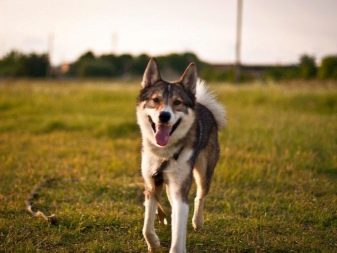
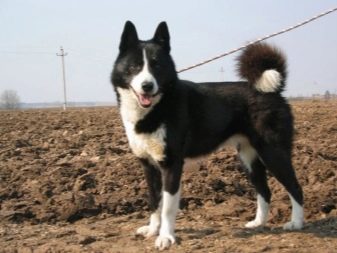
Hardy Siberian breeds should be started by lovers of an active lifestyle, hunters and travelers. Companionable huskies will become cheerful companions, serious huskies - reliable protectors. These dogs are not suitable for couch potatoes and employees who are always busy at work.
Which dog should you choose?
Before buying a dog, decide for what purpose you are purchasing it. If you need a cheerful friend who will easily get along with the household and will be sincerely glad to the owner's friends, you should pay attention to the husky. If you need a reliable assistant for hunting or a security guard for a private house, it is better to look at any type of husky... The option is to have a husky as a noble pet.
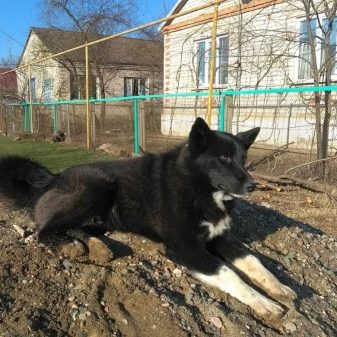
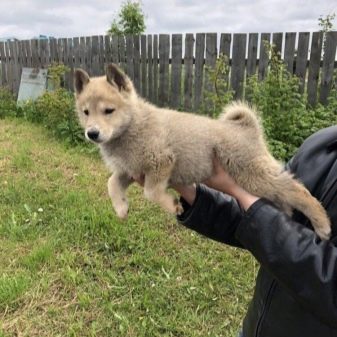
Then you should objectively assess your ability to care for the dog.
- Siberians are unpretentious in grooming, but very restless. They need a lot of physical activity. If the state of health or constant employment does not allow taking many hours of walks, it is definitely not worth having such a dog in a city apartment.
- It is important to devote time not only to walking, but also to simple communication with your pet. Otherwise, the dog will start naughty and snarl. It is pointless to punish her - in this way she tries to make up for the lack of attention. A couple of phrases spoken in a stern voice will be more effective.
- The hunting instinct is developed in dogs of these breeds.Therefore, it will take a lot of patience to teach your pet not to perceive domestic animals as prey.
- Likes and huskies - independent animals with dignity. They perceive a conversation in a raised tone as an insult. Physical punishment is unacceptable for them - dogs become vicious and aggressive. We'll have to pull ourselves together and calmly explain to the pet what he is wrong about.
- These dogs are sincerely attached to their owners and family members, therefore quarrels and quarrels are hard to bear. A tense environment runs the risk of negatively affecting the psyche of the dog. If household members do not know how to solve problems peacefully, they should look out for a more stress-resistant breed.
- Another important point is hair care. Animals should be brushed regularly. Long-haired huskies also need careful combing. During the molting period, this procedure is mandatory for representatives of both breeds. Otherwise, clubs of dog hair will be scattered all over the house.


In other words, the best dog will be the one that matches the lifestyle and expectations of the owner. It is important that the future owner is responsible for the selection of the breed, training, care and education. Then a beautiful, intelligent animal will grow out of a small puppy, which will not pose a danger either to family members or to others.
For information on how to distinguish a husky from a husky, see the next video.






































